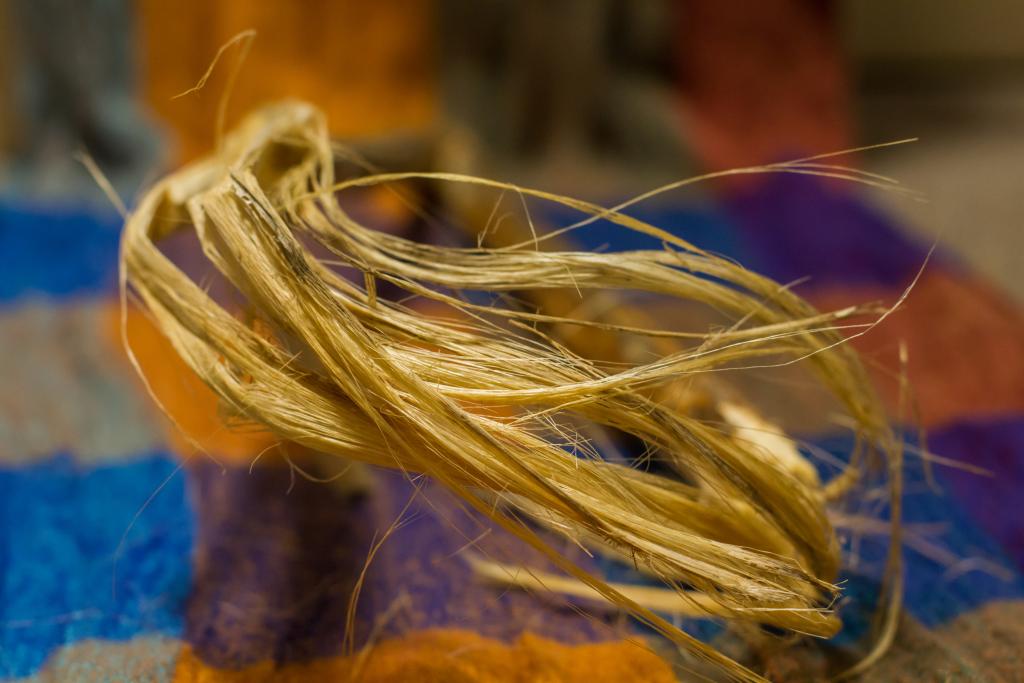In Phase 1, we were seeking to determine whether fibre-rich biomass, including bamboo, can be used to remediate degraded land in a way that is economically feasible, leading to enhanced economic complexity, the establishment of a fibre micro-industry, higher value-add in output and job creation. To do this, several environmental, chemical processing, economic and legal questions need to be answered.
Phase 2 intends to examine biorefinery as a pathway to building economic complexity in the post-mine landscape. Extending work explored in CoP 1, this concept considers fuelling a multi-product value chain by maximising resource efficiency, in terms of value addition in the post-mine landscape. The research team will also embark on a legal-theoretical analysis on the economic viability of rehabilitating abandoned mining areas, as an exploratory study of the support in the legal framework for using fibrous plants in mine land rehabilitation.
Improving the consequences of mining as a case study for diversifying economy in theA CoP guided by the SDGs
current legal framework.
What is a CoP?
The Department of Science and Technology (DST) and the National Research Foundation (NRF) continue to award funding to Communities of Practice to existing Research Chairs under the South African Research Chairs Initiative (SARChI) funding instrument.
Communities of Practice (CoP) are defined as research-led alliances, in which established researchers collaborate to produce solution-oriented research findings with an intention to translate research outputs into tangible outcomes and influence policy development and implementation through communication of the necessary research findings. Collaborations through CoPs are specifically formed to respond to the National Development Plan (NDP) by doing research that aims to find solutions to societal challenges. Therefore, CoPs have the following objectives:
- To form strategic partnerships within the local and international research community, with the aim of producing solution oriented scientific research findings.
- To make research meaningful to society by translating research findings into actionable policy activities. It is envisaged that this new knowledge will afford South Africa a competitive edge internationally and contribute towards growing the economy of the country and improving the quality of life of South Africans.
- To conduct evidenced-based research with an intent of influencing policy implementation.

The overall aim of a "Community of Practice" (CoP) is for Research Chair-led alliances to provide customised solutions and/or tools to specific challenges in society, in to order to make policy recommendations. The Towards Resilient Futures team have been tasked with:
- Communicating solution-oriented research findings in given forums to various stakeholders, government officials, practitioners, policy makers, academics and civil society, with an intent to provide solutions that can mitigate social and economic challenges faced by South Africa.
- Promoting collaborative research by increasing the number of co-published articles in high-impact journals, and by sharing of best practices in various fora within our networks.
- Availing the expertise of our network to external stakeholders for specific consultancy assignments.
- Hosting regular and sustained interactions for the CoP.
- Building research capactity.
A key deliverable is this data and information portal which stores and manages all the intellectual capital and research activities of the network.

What is the context of this CoP?
Sustainable and inclusive economic growth is desperately needed BUT South Africa’s growth constrained by its inability to undergo structural transformation.
There is a need for high productivity, high growth and an export-oriented agricultural sector, with a dynamic manufacturing sector that is both employment- and export-intensive, i.e. economic complexity.

Case study: Bioremediation and restorative agriculture in mining
Critical elements:
- Integrated land use planning
- Mining land and water use in relation to agriculture and communities
- Developing the framework for interdisciplinary work
- Alignment with the NDP

Background
Of all the challenges that South Africa faces, generating sustainable and inclusive economic growth is one of the most pressing. Such growth is particularly important given its role in tackling high levels of unemployment (26.5% in quarter 4 of 2016), poverty (Poverty headcount rate of 47.3% in 2010) and income inequality (Gini coefficient of 0.62, where zero expresses perfect equality, and 1 expresses maximal inequality).

South Africa’s relatively modest growth performance over the past two decades has arguably been constrained by its inability to undergo structural transformation. In the growth and development literature [1][2], it is held that for a pattern of structural transformation and inclusive growth to assert itself in an economy, two key interlinked ingredients are required. First, a low productivity agricultural sector needs to move to a high productivity, high growth and export-oriented agricultural sector. Second, a dynamic manufacturing sector which is both employment- and export-intensive in nature needs to be developed. In both these channels the generation of employment opportunities for a large share of the population – in particular young people – drove this transformation. Encouraging the growth of economic dynamism and, as illustrated below, complexity, in the manufacturing and agriculture sectors is therefore likely to play a key role in inclusive growth and poverty reduction in South Africa.
The process of structural transformation involves the diversification of an economy’s productive structure toward increasingly complex agriculture and manufactured products. In this regard, bioremediation and restorative agriculture for example, is one potential area of interest for economic development. The extent to which these processes result in diverse productive opportunities (e.g. the processing of hardy plants, such as bamboo, resulting in fibres used to produce textiles), and economic inclusivity, thus represent a key manifestation of how to pursue economic development at the sectoral and product level.
Globally, bioremediation and restorative agriculture are gaining traction as a way both to repair degraded land (environmental and social value) and provide economic value through integrated land development. Plants that grow on degraded soil and in treatment wetlands are receiving renewed focus, with specific interest in treating land affected by mining waste (“mine waste land”). This is of key importance in mining-rich South Africa. The widespread occurrence of metal pollution in urban areas in central South Africa presents a particular and extensive challenge, with new methods needed to concentrate and recover these metals while making optimal use of the land mass. Plants such as bamboo, hemp, and flax show promise in achieving this goal. In addition to land and water remediation, developing sources of economic value that can be sustained post-mine closure with a diversity of livelihoods for those in the area is thus of great importance.
While the biomass produced from plants grown on degraded land is unlikely to be suited to food consumption, it provides an opportunity for non-food uses, like fibre farming of textiles, composites, biomass for bioconversion to fine chemicals (and possibly fuels); and whole-plant uses, like furniture. In addition to growing hardy crops (such as bamboo or flax) for industrial applications or planting on potentially contaminated land, healthy land can also be used for growing food and material crops. Such integrated land use planning is a critical element of this research proposal.
From the perspective of integrated land use, the land and water over which mining companies have stewardship should be employed for as diversified a range of uses as possible.
Given the social license issues around mining and the sensitivities of mining land and water use in relation to agriculture and communities, this proposal forms part of the critical agenda of economic succession planning for mine land-use as existing mines move towards closure.
This research has potential beyond the development of land and water restoration integrated with diverse agriculture focused on expansion of manufacturing. Ultimately, through understanding the bio-scientific basis which would enable these plant varieties to thrive, we are then in a potential position to arrive at a more deliberate set of regulatory and economic policy interventions which may allow industries derived from these products to expand and thus raise overall economic complexity in the economy. Developing the framework for such interdisciplinary work between the environmental scientists, soil scientists, mineral experts, agriculturalists, bioprocess engineers, economists, social scientists, and lawyers, lies at the heart of this proposed research programme.
[1] Hausmann, R., Hwang, J. and Rodrik, D., 2007. What you export matters. Journal of economic growth, 12(1), pp.1-25.
[2] McMillan, M., Rodrik, D. and Verduzco-Gallo, Í., 2014. Globalization, structural change, and productivity growth, with an update on Africa. World Development, 63(1), pp.11-32.